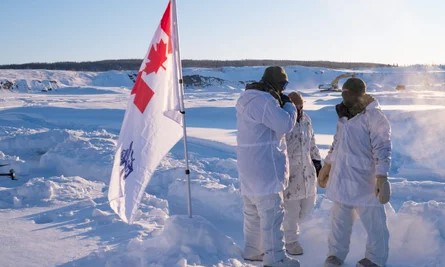Canada has taken a major step in strengthening its national defense by signing a C$6 billion (A$6.6 billion) deal with Australia to develop an advanced Arctic radar system. The new system is designed to replace the outdated North Warning System, which was originally built during the Cold War and is no longer capable of detecting modern threats.
Canada’s New Arctic Radar Deal
The announcement was made in Iqaluit, the capital of Nunavut, a northern territory that plays a crucial role in Canada’s Arctic security. Officials have stated that this radar system will enhance Canada’s ability to monitor and track potential threats over vast distances. With long-range surveillance and threat detection capabilities, the new system will help protect Canadian airspace and sovereignty.
Australia, known for its expertise in “over-the-horizon” radar technology, will play a key role in developing this system. Unlike conventional radars, which have limited range, this advanced technology can track objects far beyond the horizon. This means Canada will have continuous monitoring over its Arctic region, ensuring early warning against any potential security threats.
In addition to the radar system, Canada has also announced an additional C$420 million investment to increase its year-round military presence in the Arctic. This funding will allow Canadian forces to operate more effectively in the region, ensuring a stronger defense posture.
Australian Waters See Aggressive U.S. Submarine Expansion Under AUKUS
Shifting Global Priorities
Canada’s decision to strengthen its Arctic defense comes at a time of major global shifts in security and political alliances. For decades, Canada has relied on international institutions and military agreements to maintain its security. However, recent developments have raised concerns about the reliability of these arrangements.
One of the biggest factors influencing Canada’s defense strategy is its evolving relationship with the United States. While Canada and the U.S. have historically been close allies, recent changes in American policies have led to uncertainty. There are growing concerns that the U.S. may not prioritize Canada’s security in the same way it once did. This has prompted Canadian leaders to take greater responsibility for defending their own borders.
Australia Condemns U.S. Tariffs on Steel and Aluminum, Rejects Retaliation
The Arctic is becoming a region of increasing strategic importance, not just for Canada but for many other countries. Melting ice caused by climate change is opening new routes for transportation and resource extraction, attracting interest from nations with military ambitions. As a result, Canada must ensure that it has the necessary infrastructure and technology to protect its northern territory.
The new radar project is part of a broader effort to modernize Canada’s defense capabilities. Officials have emphasized that securing the Arctic is a top priority, and more investments will be needed in the future. The additional C$420 million allocated to Arctic military operations will help improve Canada’s ability to respond to potential threats in the region.
Rising Security Concerns in the Arctic
The Arctic has always been a region of strategic importance, but recent geopolitical developments have made it even more critical. Several countries are increasing their presence in the Arctic, leading to concerns about possible conflicts over resources and territorial claims. Canada, as one of the largest Arctic nations, must be prepared to defend its sovereignty.
One of the biggest challenges in Arctic security is the harsh environment. Extreme cold, ice-covered terrain, and limited infrastructure make it difficult to maintain a strong military presence. The new radar system will provide Canada with a significant advantage by allowing long-range surveillance without relying on outdated technology.
Russia Warns of Brutal Retaliation Against Australia’s Peacekeeping Troop Deployment in Ukraine
In addition to the radar project, Canada has announced plans to build three new Arctic military hubs. These hubs will include airstrips and equipment storage facilities, allowing Canadian forces to operate more efficiently in the region. This investment will help ensure that Canada can respond quickly to any security challenges in the Arctic.
Another factor influencing Canada’s security strategy is its trade relationship with the United States. While new Canadian leaders traditionally prioritize speaking with the U.S. president shortly after taking office, ongoing trade disputes between the two countries have delayed discussions. However, Canadian officials have stated that they will have a comprehensive discussion on trade and security at the appropriate time.
Canada’s recent investments in Arctic defense mark a significant step toward strengthening national security. By developing a modern radar system, increasing its military presence, and building new infrastructure, Canada is taking concrete actions to protect its interests in the north. These measures will help ensure that Canada remains prepared to address emerging security challenges in the Arctic.

